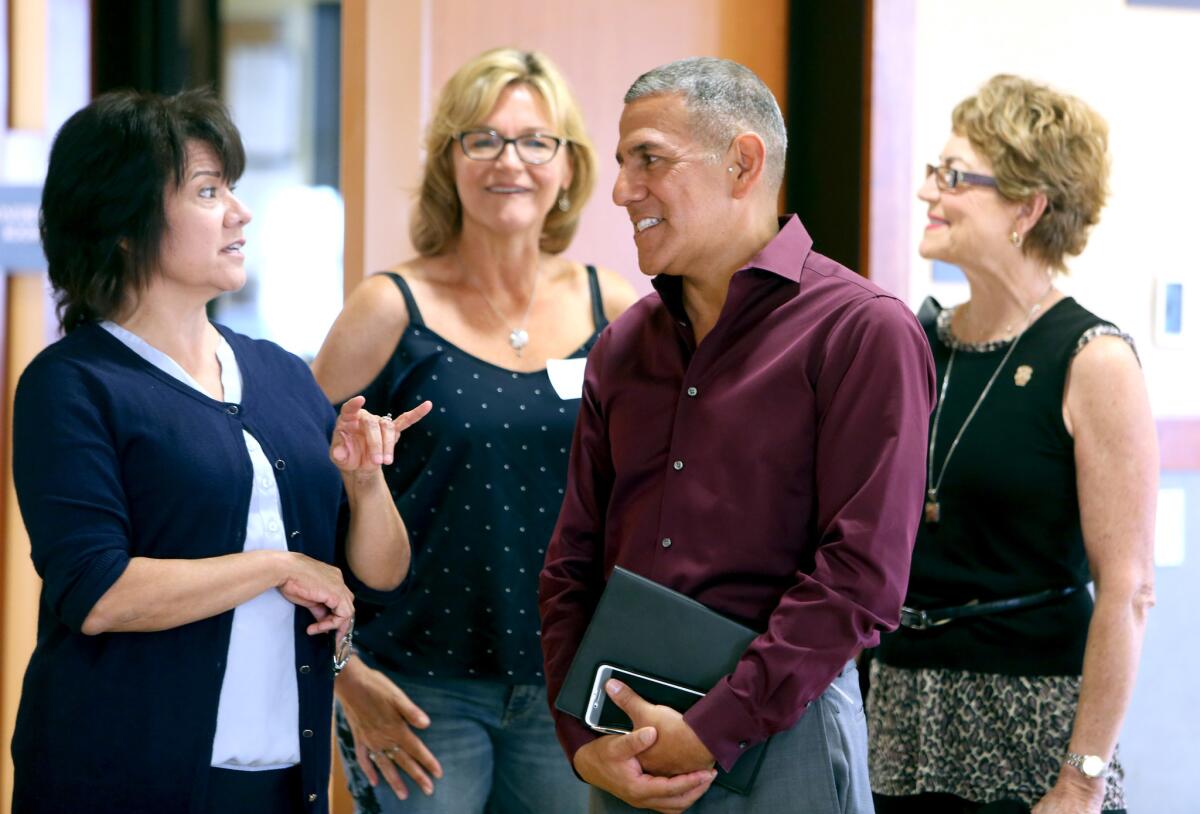Majority of Burbank Unified high-schoolers, third of teachers feel stressed out

- Share via
More than half of Burbank Unified high school students say they’re “often” or “almost always stressed,” while just over a third of district staff feel similarly, according to a health and wellness poll.
John Paramo, Burbank Unified’s assistant superintendent of educational services, presented a report during a recent board meeting detailing information regarding an online survey.
The district hired Hanover Research, based on Arlington, Va., to contact students and staff from January to March with an expressed intent of finding out if and how they were using the district’s health and wellness resources and how to improve upon what already exists.
A total of 2,023 students from Burbank, Burroughs and Monterey high schools responded, while 702 staff members, from those who work in preschools to high schools, also participated.
In terms of stress and anxiety, the online survey asked students, “In general, how would you rate your typical level of stress or anxiety?”
About 23% of Burbank Unified high school students responded they were “almost always stressed or anxious,” while 30% said they were “often” stressed, to total 53% of students. The next biggest group of students was those who identified as “sometimes stressed” at 28%.
“What are we telling our students in our schools?” asked board vice president Armond Aghakhianian. “Are we telling them this is your key to a better career or are we giving them options?”
Paramo, who took part in the district’s senior day activities on Nov. 7, in which community members took part in a one-day experience of what it’s like to be a high school senior, said he’s witnessed the amount of stress students endure to try and enroll in universities like UCLA and USC.
“The pressure for kids to want to be in those schools means that they’re going to take a lot of [advanced placement] classes and they’re going to be involved in a million activities,” Paramo said. “It’s no wonder that they’re anxious and stressed.”
Roughly 10% of faculty and staff said they were “almost always stressed,” while 25% were “often” stressed. The largest group, 42%, said they were “sometimes” stressed.
While there are many factors, some triggers stood out as either “large” or “moderate” sources of anxiety for students.
Homework was No. 1, as 42% of students said it was a large source of anxiety and 27% thought it was moderate, to total 69%.
Preparing for college was second with percentages of 38% students saying it was a large source of anxiety and 29% saying it was moderate, for a total 67%, while preparing for a career was third with percentages of 35% indicating it was a large source of anxiety and 31% saying it was moderate, for a sum of 66%.
“We have to really start addressing the sources and not just resources,” board member Steve Ferguson said of the stress factors.
“Homework and all those things are sources of anxiety, no doubt, but it also comes when students sign up for more classes than they’re ready for,” he said.
There were also a few significant differences between the schools.
Burroughs students listed mental health as a moderate or a large source of stress at 48%, while Burbank students were at 39%.
Monterey High students said family relationships were a moderate or a large source of stress at 68%, which was at least 30 percentage points higher than students at Burroughs or Burbank.
Staff pointed to teaching responsibilities as a “large source of stress” at 31%, with 30% stating that teaching duties were a “moderate source” of stress to total 61%.
Staff feeling overworked was a “large source” of stress at 30% and “moderate” at 25% for a 55% sum, while budget concerns totaled 25% as a large source of stress and 27% a moderate source of anxiety for a sum of 52%.
Despite the stress, most students said they would likely not utilize district mental or socioemotional help, such as wellness centers or school psychologists.
About 31% of students said it was “extremely unlikely” and 33% said it was “unlikely” they would seek out district services, while only 14% said they were “likely” or “extremely likely” to use district help. A total of 67% of students said they have never used any school wellness services.
Hanover Research issued a few recommendations, leading with an increase in communication to staff and students about district services.
Company officials also thought the district should “continue to provide ongoing education around mental health, wellness and socioemotional well-being to develop a common language and understanding in these areas,” while finding ways to ease the stress created by homework.
According to the survey, 72% of students say they would personally benefit from anxiety or stressed-related counseling.
Paramo said he thought many students would seek help if it didn’t interfere with school hours and that students may look outside the district for assistance.
